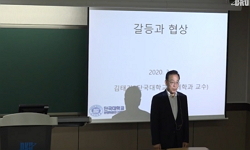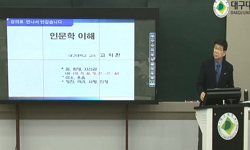본 논문의 목적은 북미 간 두 차례의 정상회담 사례를 통해 미국의 대북 협상전략 유형이 어떠한가를 분석하는 것이다. 연구범위는 북미 대화가 공식화된 2018년 2월부터 2019년 10월 스웨덴 스...
http://chineseinput.net/에서 pinyin(병음)방식으로 중국어를 변환할 수 있습니다.
변환된 중국어를 복사하여 사용하시면 됩니다.
- 中文 을 입력하시려면 zhongwen을 입력하시고 space를누르시면됩니다.
- 北京 을 입력하시려면 beijing을 입력하시고 space를 누르시면 됩니다.
미국의 대북 협상전략 유형 연구 -제1·2차 북미정상회담 사례를 중심으로- = A Study on the types of US Negotiation Strategies towards North Korea -Focusing on the 1st and 2nd North Korea-US Summit-
한글로보기https://www.riss.kr/link?id=T16945479
- 저자
-
발행사항
창원 : 경남대학교 북한대학원대학교, 2024
-
학위논문사항
학위논문(석사) -- 경남대학교 북한대학원대학교 , 정치통일전공 , 2024. 2
-
발행연도
2024
-
작성언어
한국어
- 주제어
-
발행국(도시)
경상남도
-
형태사항
156 ; 26 cm
-
일반주기명
지도교수: 양무진
-
UCI식별코드
I804:48002-200000739109
- 소장기관
-
0
상세조회 -
0
다운로드
부가정보
국문 초록 (Abstract)
1차와 2차 정상회담에서의 미국은 주로 거래형 전략을 나타냈다. 북미 대화를 시작한 1차 정상회담 준비단계에서 급진전형 전략을 택했고, 원하는 만큼의 협상 성과가 나오지 않자 2차 정상회담 합의단계에서 거부형 전략을 보인 것을 제외하면 모두 거래형 전략이었다.
다만 세부 전략은 단계별로 차이를 보였다. 1차 정상회담 준비단계에서 급진전형-이용방지전략을 택했던 미국은 협상단계에서부터 이행단계까지 거래형 전략을 유지했다. 협상단계에서 최소 양보 전략, 합의단계에서 일방적 양보 유도 전략, 이행단계에서 양보 손실의 최소화 전략이다. 2차 정상회담 준비단계에서도 거래형-양보 손실의 최소화 전략은 유지됐다. 협상단계에서는 일방적 양보 유도 전략으로 전환됐다. 급기야 합의단계에서 거부형-협상 지연 전략을 취했다. 이행단계에서 다시 거래형-양보손실의 최소화 전략으로 돌아갔다.
미국의 협상 전략의 초점은 협상의 최종 목적인 북한의 비핵화 달성이었다. 북한의 양보 없이는 합의를 이뤄낼 수 없는 쟁점이었기 때문에, 북한의 양보 수위에 따라 협상의 깊이가 달라졌다. 미국은 협상의 명분과 관련한 쟁점에 대해서는 비교적 자유로운 태도를 보였다. 체면이나 격식을 차리지 않았고, 북한의 요구를 받아주는 경우도 많았다. 그러나 협상의 목적과 관련한 쟁점에서는 쉽게 물러서지 않는 태도를 견지하며 실리를 추구했다. 이는 북미 협상이 국제적 입지를 바꿀 수 있는 북한에 비해, 미국은 상대적 이익이 크지 않았던 탓이다.
본 논문의 목적은 북미 간 두 차례의 정상회담 사례를 통해 미국의 대북 협상전략 유형이 어떠한가를 분석하는 것이다. 연구범위는 북미 대화가 공식화된 2018년 2월부터 2019년 10월 스웨덴 스톡홀름 실무협상까지 21개월의 기간이다. 정상회담 협상 과정은 준비단계, 협상단계, 합의단계, 이행단계로 구분할 수 있다. 단계별 협상 유형은 3B 모델에 따라 급진전형, 거래형, 거부형으로 나뉜다.
1차와 2차 정상회담에서의 미국은 주로 거래형 전략을 나타냈다. 북미 대화를 시작한 1차 정상회담 준비단계에서 급진전형 전략을 택했고, 원하는 만큼의 협상 성과가 나오지 않자 2차 정상회담 합의단계에서 거부형 전략을 보인 것을 제외하면 모두 거래형 전략이었다.
다만 세부 전략은 단계별로 차이를 보였다. 1차 정상회담 준비단계에서 급진전형-이용방지전략을 택했던 미국은 협상단계에서부터 이행단계까지 거래형 전략을 유지했다. 협상단계에서 최소 양보 전략, 합의단계에서 일방적 양보 유도 전략, 이행단계에서 양보 손실의 최소화 전략이다. 2차 정상회담 준비단계에서도 거래형-양보 손실의 최소화 전략은 유지됐다. 협상단계에서는 일방적 양보 유도 전략으로 전환됐다. 급기야 합의단계에서 거부형-협상 지연 전략을 취했다. 이행단계에서 다시 거래형-양보손실의 최소화 전략으로 돌아갔다.
미국의 협상 전략의 초점은 협상의 최종 목적인 북한의 비핵화 달성이었다. 북한의 양보 없이는 합의를 이뤄낼 수 없는 쟁점이었기 때문에, 북한의 양보 수위에 따라 협상의 깊이가 달라졌다. 미국은 협상의 명분과 관련한 쟁점에 대해서는 비교적 자유로운 태도를 보였다. 체면이나 격식을 차리지 않았고, 북한의 요구를 받아주는 경우도 많았다. 그러나 협상의 목적과 관련한 쟁점에서는 쉽게 물러서지 않는 태도를 견지하며 실리를 추구했다. 이는 북미 협상이 국제적 입지를 바꿀 수 있는 북한에 비해, 미국은 상대적 이익이 크지 않았던 탓이다.
다국어 초록 (Multilingual Abstract)
For both the first and the second summits, the United States primarily employed Bargaining strategy. There were two exceptions; the Breakthrough type in Preparation stage of the first summit, and the Blocking strategy in the Agreement stage of the second summit, when the negotiations did not result in as much achievements as anticipated.
However, the detailed strategies varied for each negotiation step. While the United States adopted the Breakthrough strategy-prevent utilization strategy at the Preparation stage of the first summit, they switched to the Bargaining type from the Negotiation stage to the Implementation stage. The detailed strategies for the Bargaining style are as follows: the minimum concession strategy at the Negotiation stage, the unilateral concession induction strategy at the Agreement stage, and the strategy to minimize concession losses at the Implementation stage. Furthermore, the strategy to minimize concession losses was maintained at the Preparation stage for the second summit. At the Negotiation stage, however, they shifted to a strategy to induce unilateral concessions. Moreover, the United States elected Blocking type at the Agreement stage. Only at the Implementation stage, they returned to the strategy to minimize concession losses.
For the United States, the ultimate goal of the negotiations was denuclearization of North Korea. The depth of the negotiations varied depending on the level of concessions made by North Korea because it was an issue that could not be reached without North Korea's concessions. When it came to the issues related to the justification of the negotiations, the United States was relatively relaxed. They frequently accepted North Korea's demands without all the bells and whistles. However, when it came to the issues related to the purpose of the negotiations, they pursued practical benefits by maintaining a rather unyielding attitude. This is due to the relatively smaller benefit expected for the United States, whereas unlike North Korea which could change its ground on the international stage through United States-North Korea negotiations.
The purpose of this study is to analyze the types of United States negotiation strategies towards North Korea from the examples of the two summits between North Korea and the United States. This study covers the 21-month period spanning from the offic...
The purpose of this study is to analyze the types of United States negotiation strategies towards North Korea from the examples of the two summits between North Korea and the United States. This study covers the 21-month period spanning from the officialized dialogue between the United States and North Korea in February 2018 to the working-level negotiations in Stockholm, Sweden in October 2019. The negotiation process for the summits can be divided into four stages; Preparation, Negotiation, Agreement, and Implementation. The negotiations strategy for each stage can be categorized into Breakthrough type, Bargaining type, and Blocking type according to the 3B model.
For both the first and the second summits, the United States primarily employed Bargaining strategy. There were two exceptions; the Breakthrough type in Preparation stage of the first summit, and the Blocking strategy in the Agreement stage of the second summit, when the negotiations did not result in as much achievements as anticipated.
However, the detailed strategies varied for each negotiation step. While the United States adopted the Breakthrough strategy-prevent utilization strategy at the Preparation stage of the first summit, they switched to the Bargaining type from the Negotiation stage to the Implementation stage. The detailed strategies for the Bargaining style are as follows: the minimum concession strategy at the Negotiation stage, the unilateral concession induction strategy at the Agreement stage, and the strategy to minimize concession losses at the Implementation stage. Furthermore, the strategy to minimize concession losses was maintained at the Preparation stage for the second summit. At the Negotiation stage, however, they shifted to a strategy to induce unilateral concessions. Moreover, the United States elected Blocking type at the Agreement stage. Only at the Implementation stage, they returned to the strategy to minimize concession losses.
For the United States, the ultimate goal of the negotiations was denuclearization of North Korea. The depth of the negotiations varied depending on the level of concessions made by North Korea because it was an issue that could not be reached without North Korea's concessions. When it came to the issues related to the justification of the negotiations, the United States was relatively relaxed. They frequently accepted North Korea's demands without all the bells and whistles. However, when it came to the issues related to the purpose of the negotiations, they pursued practical benefits by maintaining a rather unyielding attitude. This is due to the relatively smaller benefit expected for the United States, whereas unlike North Korea which could change its ground on the international stage through United States-North Korea negotiations.
목차 (Table of Contents)
- 국문요약 = ⅳ
- 제1장 서론 = 1
- 제1절 연구목적 = 1
- 제2절 선행연구 검토 = 3
- 제3절 연구범위 및 방법 = 6
- 국문요약 = ⅳ
- 제1장 서론 = 1
- 제1절 연구목적 = 1
- 제2절 선행연구 검토 = 3
- 제3절 연구범위 및 방법 = 6
- 제2장 이론적 배경 = 8
- 제1절 협상 전략·전술 개념 = 8
- 제2절 협상 단계론 = 10
- 제3절 협상 전략·전술 유형 = 13
- 제3장 1차 북미정상회담: 급진전형·거래형 = 17
- 제1절 전개과정 = 17
- 제2절 쟁점과 대응 = 25
- 1. 준비단계(2018년 2월~3월) = 25
- 2. 협상단계(2018년 4월~회담 전) = 30
- 3. 합의단계(2018년 6월 12일) = 43
- 4. 이행단계(2018년 6월 13일~7월) = 48
- 제3절 단계론적 전략 유형 = 56
- 1. 사안별 협상 과정 행태 = 56
- 2. 대북 협상 전략·전술 = 66
- 제4장 2차 북미정상회담: 거래형·거부형 = 76
- 제1절 전개과정 = 76
- 제2절 쟁점과 대응 = 88
- 1. 준비단계(2018년 8월~9월 중순) = 88
- 2. 협상단계(2018년 9월 말~회담 전) = 96
- 3. 합의단계(2019년 2월 27일~28일) = 109
- 4. 이행단계(2019년 3월~10월) = 115
- 제3절 단계론적 전략 유형 = 125
- 1. 사안별 협상 과정 행태 = 125
- 2. 대북 협상 전략·전술 = 134
- 제5장 결론 = 144
- 참고문헌 = 147
- ABSTRACT = 154











